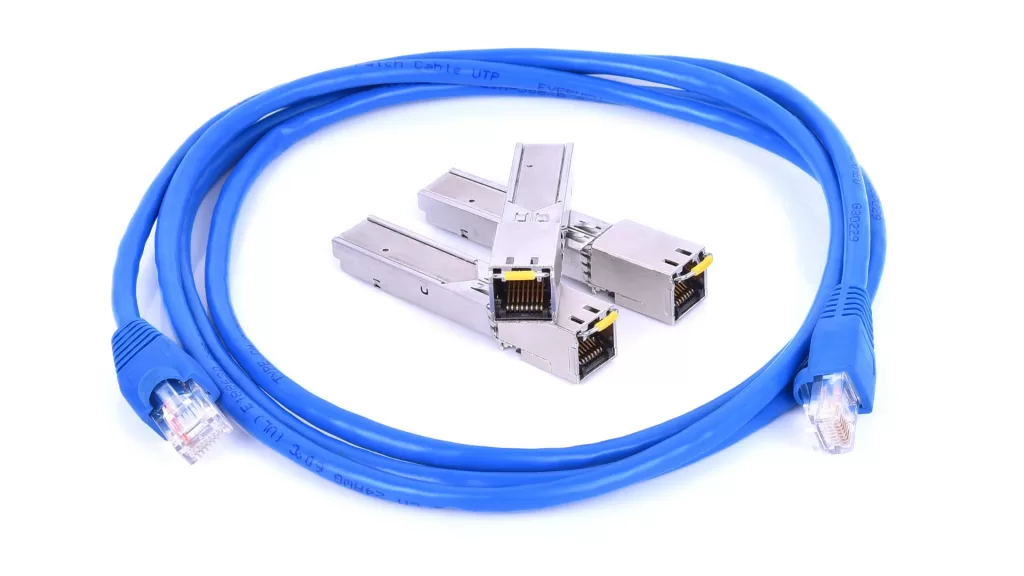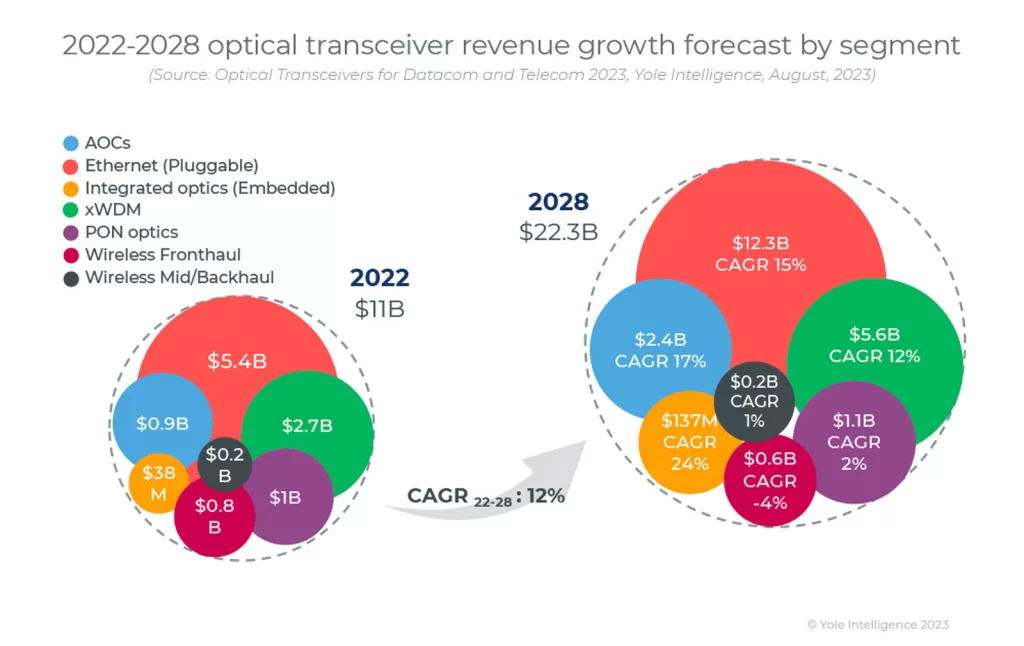The digital landscape is undergoing a paradigm shift, driven by the explosive growth of 5G technology and the ever-expanding Internet of Things (IoT). These advancements demand robust and versatile network infrastructure capable of handling massive data volumes, high speeds, and low latency. In this complex equation, Small Form-factor Pluggable (SFP) modules emerge as critical elements, pivotal in enabling seamless 5G and IoT connectivity.
SFP Modules: Compact Powerhouse

SFP modules are compact, hot-swappable transceivers designed to transmit and receive data over optical fiber cables. Their modularity and flexibility make them ideal for various network applications, including:
- Data centers: Interconnecting servers, switches, and storage within data centers.
- Enterprise networks: Connecting buildings, campuses, and remote offices.
- Wireless networks: Backhauling mobile base stations and supporting 5G deployments.
- Metro networks: Providing high-bandwidth connectivity for businesses and residential customers.
The Rise of 5G and Its Connectivity Demands
5G promises a new era of connectivity with significantly faster speeds, lower latency, and enhanced capacity compared to its predecessors. This technology fuels diverse applications like:
- Ultra-fast mobile broadband: Enabling seamless streaming, augmented reality experiences, and real-time gaming.
- Connected devices: Supporting the proliferation of IoT devices, ranging from smart sensors and wearables to industrial automation systems.
- Mission-critical applications: Facilitating remote surgery, autonomous vehicles, and other latency-sensitive operations.
However, realizing the full potential of 5G requires a robust network infrastructure capable of handling these demanding requirements. SFP modules play a crucial role in meeting these challenges by offering:
High bandwidth
Supporting data rates of 10G, 25G, 40G, and even 100G to accommodate the exponential growth of data traffic.
Low latency
Enabling near-instantaneous data transmission, critical for real-time applications like remote surgery and autonomous vehicles.
Versatility
Available in various configurations to support different distances, wavelengths, and protocols, ensuring compatibility with diverse network architectures.
Scalability
Allowing networks to easily adapt to changing needs by adding or swapping modules as required.
SFP Modules and the IoT Landscape
The Internet of Things (IoT) encompasses a vast network of interconnected devices collecting and transmitting data. This ecosystem thrives on reliable and efficient connectivity, where SFP modules play a vital role by:
Connecting diverse devices
Supporting various communication protocols and data rates to accommodate different types of IoT devices.
Extending network reach
Enabling long-distance connectivity for remote sensors and devices located in hard-to-reach areas.
Ensuring data security
Offering encryption capabilities to protect sensitive data transmitted over the network.
Emerging Trends in SFP Technology
As technology evolves, SFP modules are constantly being refined to meet the ever-increasing demands of 5G and IoT deployments. Some key trends include:
- Higher data rates: The development of 800Gbps and even 1.6 Tbps SFP modules to address the exponential growth of data traffic.
- Advanced modulation formats: Utilizing techniques like PAM4 and DMT to boost data rates and transmission distances.
- Integration with AI and machine learning: Incorporating intelligent features to optimize network performance and security.
The Future of SFP Modules

As 5G and IoT continue to gain momentum, SFP modules will remain indispensable components of network infrastructure. Their versatility, scalability, and adaptability ensure they can seamlessly integrate into evolving network architectures and support the ever-growing demands of the digital age. With continuous advancements in technology, SFP modules promise to be at the forefront of enabling a hyper-connected future, empowering diverse applications and revolutionizing the way we live, work, and interact with the world around us.
FAQs
General
What are SFP modules?
Small Form-factor Pluggable transceivers used for data transmission over fiber optic cables.
Why are SFP modules important for 5G and IoT?
They offer high bandwidth, low latency, versatility, and scalability, all crucial for these demanding applications.
What are the different types of SFP modules?
Various types exist based on data rate, distance, wavelength, and protocol support.
What are the benefits of using SFP modules?
Hot-swappable, compact, flexible, scalable, and support diverse network architectures.
What are the future trends in SFP technology?
Higher data rates, advanced modulation formats, and integration with AI/ML.
Technical
What data rates do SFP modules support?
From 155 Mbps to 800 Gbps and even 1.6T is in the testing stage.
What kind of distances can SFP modules cover?
Short distances within data centers to long distances for remote connections.
What are the different types of optical connectors used with SFP modules?
LC, SC, SCA, FC, MPO and others depending on application.
Do SFP modules require any special configuration?
Most are plug-and-play, but some may require configuration depending on the network.
Are SFP modules secure?
Many offer encryption capabilities to protect sensitive data.
Applications
How are SFP modules used in data centers?
Interconnecting servers, switches, and storage for high-speed data transfer.
What role do SFP modules play in enterprise networks?
Connecting buildings, campuses, and remote offices for efficient communication.
How are SFP modules used in 5G deployments?
Backhauling mobile base stations and supporting high-bandwidth connectivity.
Are SFP modules suitable for IoT applications?
Yes, they connect diverse devices, extend network reach, and ensure data security.
What are some emerging applications for SFP modules?
Autonomous vehicles, smart cities, and industrial automation.
About Author


















